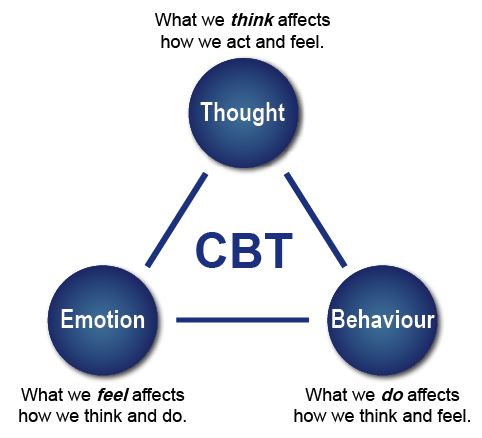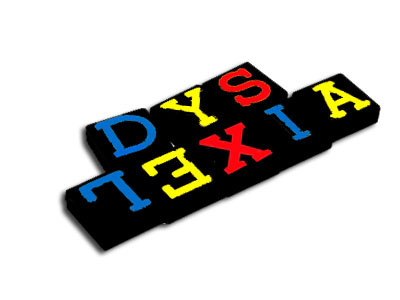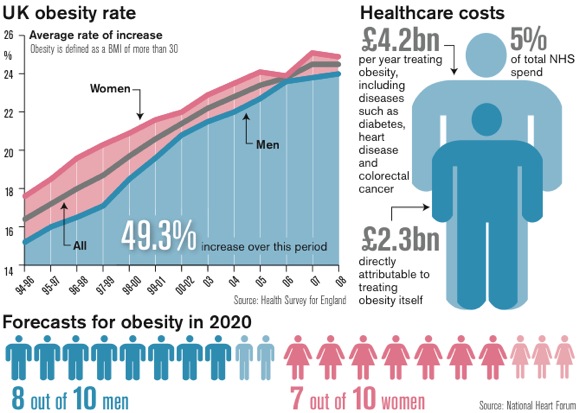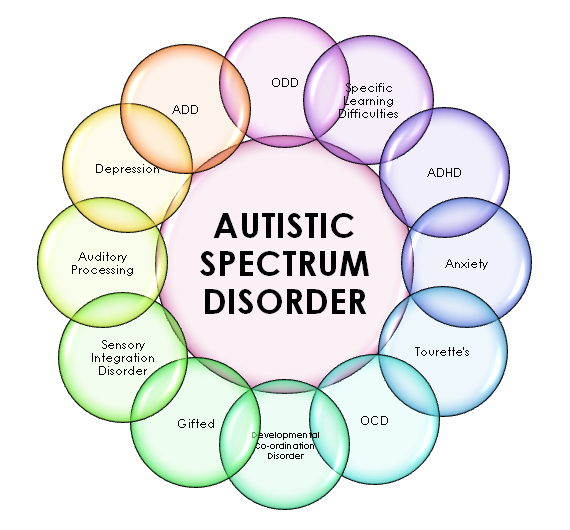Introduction
Nanotechnology is defined as the technology and manufacture of small non-biological or biological objects that involve individual molecules or atoms, or are manipulated on the scale of 10 -9 meters (less than 100 nanometers) (Veloz-Castillo, West, Cordero-Arreola, Arias-Carrión, & Méndez-Rojas, 2016). These materials are usually designed to perform particular tasks, and the technology is being utilized in scientific disciplines like tissue engineering, molecular imaging, molecular biology, surface science, and microelectronics (Mattei & Rehman, 2015).
Due to the small size of nanotools and nanoparticles, medical applications of nanotechnology support the possibility that interventions of better control, higher precision, and minimal invasion can be done at the subcellular level, and provide more accurate control of intracellular networks than is currently in existence.
In neuroscience, a field that is involved in the understanding of nervous system functions and information processing, and the application of knowledge to treating neurological disorders, nanotechnology can be used to recognize cellular-level diseases during diagnosis, and deliver therapeutic compounds in the treatment of these conditions.
Historical Timeline and Predecessor Assessment
K. Eric Drexler (1986) wrote the first book in nanotechnology and credited technology for people’s ability to arrange atoms and manipulate them to create specific forms or perform particular functions. He recounted the progress that engineers were making in microelectronic technology and spoke of molecular technology, a new invention that will change the world by enabling people to handle individual molecules and atoms with precision and control. Regarding medicine, Drexler (1986) observed that genetic engineers were already paving the way for molecular technology by using modern gene synthesis machines that built orderly polymers with a level of precision that microelectronic engineers of the time could not achieve.
Before Dexter’s work, other scientists had seen the possibility of nanotechnology being real in the future, and after him, engineers invented devices that transformed theories into reality.
| Year | Milestones in Nanotechnology |
| 1959 | R. Feynman initiated the thought process. |
| 1974 | Taniguchi used the term nanotechnology for the first time. |
| 1981 | IBM invented the Scanning Tunneling Microscope. |
| 1985 | “Bucky Ball” |
| 1986 | K. Eric Drexler published the first book on nanotechnology. |
| 1989 | IBM made its logo using individual atoms. |
| 1991 | S. Iijima discovered the Carbon Nanotube. |
| 1999 | R. Freitas published the 1st book on nano medicine. |
| 2000 | Launching of the National Nanotechnology Initiative. |
| 2001 | Feynman Prize in Nanotechnology was awarded for developing theory of nanometer-scale electronic devices and for synthesis and characterization of carbon nanotubes and nano wires. |
| 2002 | Feynman Prize in Nanotechnology was awarded for using DNA to enable the self-assembly of new structures and for advancing modeling molecular machine systems. |
| 2003 | Feynman Prize in Nanotechnolog was awarded for modeling the molecular and electronic structures of new materials and for integrating single molecule biological motors with nano-scale silicon devices. |
| 2004 | First policy conference on advanced nanotech was held. First center for nano mechanical systems was established, Feynman Prize in Nanotechnology was awarded for designing stable protein structures and for constructing a novel enzyme with an altered function. |
| 2005-2010 | Preparation of 3D Nano systems like robotics, 3D networking and active nano products that change their state during use. |
| 2011 | Era of molecular nano technology started. |
Source: Nikalje A. P. (2015, p.82).
Before the 20th Century
Nanoporous ceramic filters were being used to separate viruses. Albert Einstein and Max Planck (1900 cited in Krukemeyer, Krenn, Huebner, Wagner, & Resch, 2015) produced evidence that there had to be a series of tiny particles that obeyed their own laws although there were no instruments at the time to make these elements visible.
20th Century
In 1902 Richard Zsigmondy and Henry Siedentopf developed an ultramicroscope that used ruby glasses to detect structures that were smaller than 4 nanometers (Krukemeyer et al., 2015). Zsigmondy created an immersion ultramicroscope in 1912 which investigated the behavior colloidal solutions. After that, scientists got better resolutions with the transmission electron microscope (TEM), the filed ion microscope (FIM), and the voltage clamp so that they were able to understand DNA and RNA by the 1960s (Krukemeyer et al., 2015). In 1980, Gerd Binnig and Heinrich Rohrer created the scanning tunneling microscope (STM), and future applications of their methods made it possible to demonstrate nanoscale structures accurately, and to position and manipulate them in a controlled manner (Krukemeyer et al., 2015). It opened up the possibilities of new scientific disciplines including nanomedicine.
By the time Drexler (1986) wrote his book, biochemists were using gene machines to write DNA tapes so they could direct cells and build designed proteins. However, they could not design chains that fold up to create proteins of the correct shape and function. Drexler (1986) believed the problem was that the scientists were focused on predicting the fold patterns of natural proteins instead of taking on an engineering challenge and designing proteins so they can fold predictably. He was certain that the protein-folding solution would allow biotechnologists to deal with individual atoms, which is central to nanotechnology.
Social Impact of Nanotechnology
There has been a lot of interest in nanotechnology and its applications since the idea was coined in 1959, and the investments that companies and countries put in the process are expected to increase drastically in future. Currently, carbon nanotubes and graphene are the most followed nanomaterials on Facebook, and most users are interested in the nanotechnology (58,188) and nanomedicine (5,366) pages (Sechi, Bedognetti, Sgarella, Van Eperen, Marincola, Bianco, & Delogu, 2014).
Graphene, carbon nanotubes, and quantum dots are the most liked nanomaterials on Facebook (2,683, 1,433, and 160), have the most number of groups on the site (16, 7, and 5), and the highest number of members in those groups (288, 414, and 170) respectively (Sechi et al. 2014). However, the public and international institutiona are concerned that nanomaterials have negative effects on the environment and human health so they advocate for industry regulations.
Campbell, Deane, and Murphy (2015) believe that people think of nanotechnology as a frontier culture, and that is why it has excited their cultural imagination. Since nanotechnology is being used in outfits, medicine, and numerous services, it affects everyone. Analyzing the development of nanotechnology in the society using Piaget’s theory of cognitive development:
| Developmental Stage | Nanotechnology |
| Sensorimotor stage | Scientists learn about the basics ofnanotechnology, how to use the scanning tunneling microscope and they discover the first carbon nanotube as the pioneer authors on the topic publicize the concept (Nikalje, 2015). |
| Preoperational stage | IBM create their logo using individual atoms, and the simplified feature help people to grasp the physical impact of nanotechnology and star building devices for storage, biosensors, and computer chips (IBM, 2009). |
| Concrete operations | Nanotechnologists realize that they can implement the new technology in both the service and product industries like food nutrition, social security, renewable energy, quality education, communications, neuromedicine, health care services, and advertising (Aithal & Aithal, 2016). |
| Formal operations | Scientists play the first nano guitar even though its sound cannot be conceived by the human ear, and create usable revolutionary sports equipment and outfits, and successful drug delivery systems used to treat neurodegenerative disorders (PRI, 2014, McNamee, 2011, Taylor, 2008, Nikalje, 2015). |
Table 1: Analysis of nanotechnology’s development using Piaget’s theory.
Cultural Impact of Nanotechnology
According to a report published by Seear, Petersen, and Bowman (2009), between 1997 and 2004, the United States of America spent more than the European Union (EU) did on R&D for nanotechnology. In 2004 alone, the US spent $1 billion more than EU countries, and America leads in the field since it has world class universities that pioneer research. For example, the first nano guitar was built at Cornell University, New York in 1997 (McNamee, 2011), and in 2015, researchers at Berkeley Lab US developed an ultra-thin invisibility cloak which hides 3D objects from detection (Dockrill, 2015). Words that were introduced into the English language through such research include nanoparticles, bionanotechnology, and silver nanoparticles, and artists and musical groups were using variations of these terms on Facebook (Sechi et al. 2014).
In 1989 when Don Eigler and his team at IBM realized that they could use the scanning tunneling microscope (STM) to arrange individual atoms on a surface with precision, Eigler used 35 xenon atoms to write the company logo (IBM, 2009). The exercise was a nanoscience and technology breakthrough, so IBM took some credit for Eigler’s work and the invention of the STM, as its scientists continued working on more nanotechnology inventions (IBM, 2009).
The images of this logo taken by Eigler pioneered the work of California-based scientist and artist Cris Orfescu who uses a scanning electron microscope to get nanoscale images of landscapes he calls ‘nanoart’ (PRI, 2014). Orfescu prints these electron scans on canvas and uses the creations to inform people about nanotechnology in the 21st Century while using his online nanoart contest to encourage nanotechnologists to embrace the new science as an art form (Feder, 2008).
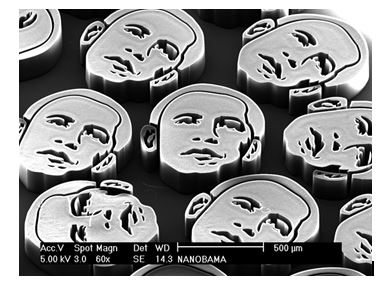
Nanotechnology has also been used to design ultra-lightweight swimwear that absorbs water to only 2% of fabric weight compared to previous materials which absorbed 50%, and to create tennis racquets that are 22% more powerful than conventional ones, and twice as stable (Taylor, 2008). Nanotechnology helps designers to make athletic shoes since they are able to use molecular-sized particles to achieve maximum durability and comfort. During the 2008 Olympic Games, Jeremy Wariner used such a shoe designed by Adidas, and it was called ‘Lone Star spike’ because it was said to provide Wariner with increased flexibility, safety, better torsion, comfort, and more stability even as it reduced energy loss (Taylor, 2008).
Economic Impact
The industries that are utilizing nanotechnology include food, drinking water, energy, cosmetics, medicine, sport, automobiles, construction, banking, mass communication, retailing, hospitality, and entertainment (Aithal & Aithal, 2016). With the increase in the nanotechnology patents applied for in different industries across the world, it is expected that the StatNano database will expand substantially over the next five years.
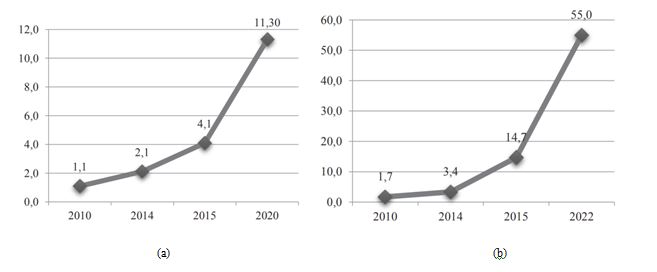
Source: Inshakova & Inshakov, 2017
According to this data published by Inshakova and Inshakov (2017) shows that NN-related publications have increased from 16,397 in 2000 to 128,436 in 2014. Both developed and developing industries are participating in the development of nanotechnological applications, with China leading (233,250) in the number of articles it has published between 2000 and 2014, followed by the USA (201, 203), and then Japan (81,516) (Inshakova & Inshakov, 2017). This number also indicates the amount of resources that these countries are dedicating to the advance of nanotechnology in their respective areas, and their willingness to regulate the industry while taking advantage of the opportunities available in science.
Nanotechnology Environmental and Political Impact
The development of specific applications for each field in the business world has made it easier for regulators to measure the actual effect that nanotechnology has in different areas. The industrial prototyping and commercialization of nanotechnology started back in 2000 with the first generation nanostructures being passive, the second generation being active, the third generation being systems, and the fourth generation being molecular nanosystems (Seear, Petersen, & Bowman, 2009).
By 2008, analysts had not yet seen the harmful effects that would have arisen due to exposure to nanotechnology in terms of ecological damage or harm to humans (Seear, Petersen, & Bowman, 2009). However, they were of the opinion that it is best to address the expected risks of nanotechnology by tightening the regulations that govern nanotechnology and its applications across the globe. Those who participated in the study held by Sechi et al. (2014) also felt that it would be safer for the environment if the international community came together to ensure that governments did not create anything related to nanotechnology that will endanger people and their surroundings.
References
Aithal, P. S., & Aithal, S. (2016). Business Strategy for Nanotechnology based Products and Services. Munich Personal RePEc Archive, MPRA Paper No. 71766.
Dockrill, P. (2015). Watch: Nano:sized invisibility cloak can make small objects disappear. Science Alert.
IBM (2009). IBM celebrates 20th anniversary of moving atoms. IBM News Releases.
Inshakova, E., & Inshakov, O. (2017). World market for nanomaterials: structure and trends. In MATEC Web of Conferences (Vol. 129, p. 02013). EDP Sciences.
McNamee, D. (2011). Hey, what’s that sound: Nano guitar. The Guardian.
PRI (2014). Scientists are becoming artists, thanks to ‘NanoArt’. Public Radio International.
Sechi, G., Bedognetti, D., Sgarrella, F., Van Eperen, L., Marincola, F. M., Bianco, A., & Delogu, L. G. (2014). The perception of nanotechnology and nanomedicine: a worldwide social media study. Nanomedicine, 9(10), 1475-1486.
Seear, K., Petersen, A., & Bowman, D. (2009). The social and economic impacts of nanotechnologies: A literature review. Final Report Prepared for the Department of Innovation, Industry, Science and Research, Monash University Victoria, Australia. Taylor, D. (2008). Nanotechnology in sports. EE453 Project Report.
Relevant Blog Posts
Basic Cognitive Neuroscience Diseases
Cognitive Psychology Research Project
Dissertation – A Critical Evaluation of the Effectiveness of Cognitive Behaviour Therapies for Children and Adolescents with Anxiety Disorders
Health Studies Dissertations
If you enjoyed reading this post on nanotechnology and its application in neuroscience, I would be very grateful if you could help spread this knowledge by emailing this post to a friend, or sharing it on Twitter or Facebook. Thank you.

